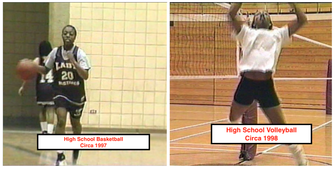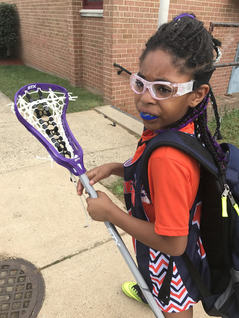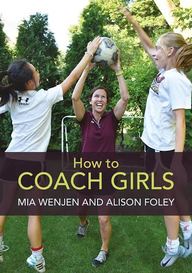 Athletics has been in my life in some form since I was about 10 years old. I remember making my first basketball team in 7th grade which led to an undefeated season that opened the pathway to me playing three varsity sports through my senior year in college. With decades of successful and unsuccessful seasons under my belt, I then decided to jump on the other side of the whistle and try my hand at coaching. The exhilaration of the game now anew and refreshed, I learned a great deal about what it takes to build championship mentalities, loving support networks, and wacky pregame rituals. The range of emotions felt while participating in sports as a coach and athlete, has fueled my desire to support my own children in their respective athletic pursuits. Knowing a lot about athletics does not put my mind at ease. How can I support my child, her team, and her coach? The tween and teen years are critical times for building self image. Sports provide girls with higher levels of confidence and self-esteem, lower levels of depression, as well as, a positive body image. However, 70% of all kids quit organized sports by 13, with girls quitting six times the rate of boys. This means that girls are leaving the game at a critical period of physical, emotional, social, and psychological development. They’re missing out on enriching opportunities that lay the foundation for healthy habits later in life. I’ve witnessed my share of middle school athletes (either as teammates or as student athletes I was coaching), give up on a very promising path toward athletic success. How could they walk away from something so fun and enjoyable? What can be done to reverse this trend?  How to Coach Girls came right on time. As a parent spectator, this book made me think back to some of my best team experiences and reminded me of why I played sports in the first place. It’s more than wins and losses. “Greatness isn’t just about victories; it’s about helping others and making a difference where possible” (p.47). This book uncovers the ideal team environment for girl athletes of all ages and levels. Just as parents should know the ideal classroom environment for their child; parents should also educate themselves on the type of team environment that best supports the growth and development of their student athlete. Recognizing great coaching technique provides reassurance as you support your student athlete from the sideline. How to Coach Girls provides anecdotal wisdom; tangible success strategies; and answers to many of the questions that keep coaches and parents of athletes up at night. Whether you’re searching for answers on growth mindset, figuring out opportunities to sprinkle in more fun, or looking for advice on how to coach your own kid, How to Coach Girls is an all-inclusive outline for success. Recurring themes I appreciated throughout the book were: nurturing the entire person; providing athletes with opportunities to learn; and encouraging girls to use their social nature to build positive lifelong relationships and bonds with teammates and coaches. And of course keeping it fun, because “coaches are the first line of defense in making sure sport is fun” (p.17). I encourage parents and coaches to read How to Coach Girls. As a former college athlete, former varsity coach, and current parent on their daughters’ respective sidelines, I LOVE the idea of this book. How to Coach Girls is filled with pages of relatable experiences, comprehensive strategies, and wise perspectives. A coach at any level is certain to get something from this book. Parents of a girl athletes will leave this book educated on the type of athletic environment that’s required for their daughter to thrive.
2 Comments
3/10/2018 02:43:01 pm
Thank you so much for your support of HOW TO COACH GIRLS. It means a lot of us, especially with all your experience as an athlete and a coach!
Reply
Your comment will be posted after it is approved.
Leave a Reply. |
I'm a former teacher and former college athlete, currently working to make life more equitable for all people. My mission is to get parents to partner with their child's teacher.
|

